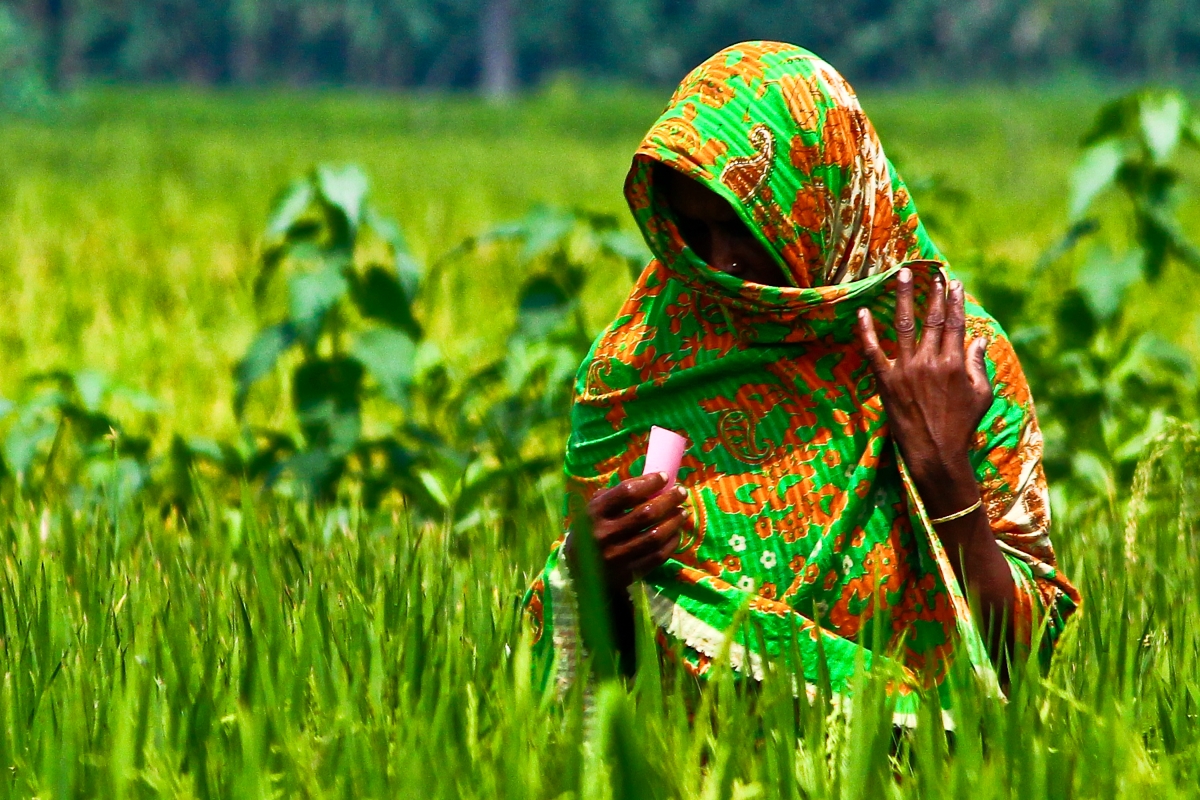Women’s empowerment has been chosen as one of the key dimensions in assessing social sustainability in the SRP because women play a critical role in rice production.
The Sustainable Rice Platform (SRP) adopted a triple bottom line (TBL) approach to assess the sustainability of rice agrifood systems. The TBL approach emphasizes the need not only to maximize profits (economic sustainability) through enterprises but also to better people’s lives (social sustainability) and help the planet (environmental sustainability).
The social bottom line measures the long-term sustainability of human capital and, hence, the ability of enterprises to thrive. The license to operate enterprises depends greatly on their social sustainability efforts and impacts. A lack of social development, including poverty and inequality, can hamper business operations and growth. At the same time, actions to achieve social sustainability may unlock new markets, help retain and attract business partners, or inspire innovation for new product or service lines.
People first
Social development puts “people first” in development processes. Poverty is more than low incomes and is multi-dimensional. It is also about vulnerability, powerlessness, exclusion, and unaccountable institutions. This means that enterprises engaged in rice agrifood systems understand and respond to the needs of local communities, tailored to local contexts, and promote social inclusion, cohesion, and accountability. Although it is difficult to measure social bottom line because most benefits are intangible and nonquantifiable, it is nevertheless very important.
Social sustainability occurs when the formal and informal processes, systems, structures, and relationships actively support the capacity of current and future generations to create healthy and livable communities that are equitable, diverse, connected, and democratic, and provide good quality of life.
It is about identifying and managing business impacts—positive and negative—on people. Defining and measuring social indicators and tracking changes are important for the SRP to understand the impacts of rice value chains on the equity and well-being of vulnerable and marginalized population groups dependent on rice agrifood systems and inform the design of strategies or actions that would mitigate the negative impacts and amplify the positive impacts.
Women in rice
Women’s empowerment has been chosen as one of the key dimensions in assessing social sustainability in the SRP because women play a critical role in rice production and other parts of agrifood systems.
Studies show that, on average, women contribute 43% of the labor in rice production in Asia. The increasing out-migration of men and youth from rural areas in search of employment and income-generating opportunities leaves rice farming and management in the hands of women. But, evidence shows that rural women face significant constraints in access to productive assets/resources (land, water, machinery, and tools) and services (extension, market information, credit). Women are underrepresented in decision-making roles. They receive unequal pay for equal work. Additionally, women-owned enterprises are economically disadvantaged and lack equal opportunity to compete for business opportunities.
In situations in which women are directly involved in rice production, women’s empowerment (e.g., increasing women’s access to knowledge) is expected to lead to higher productivity and profitability. Evidence also proves that empowering women and girls helps expand economic growth, promote social development, and establish more stable and just societies. Women’s economic empowerment benefits both women and children, and leads to improved maternal health and improved family and community health and well-being.
Women in control
The United Nations Sustainable Development Goals underscore women’s empowerment as an important development objective, in and of itself, and highlight the relevance of gender equality to addressing a wide range of global challenges.
The following dimensions have been chosen to develop key indicators for women’s empowerment in the SRP:
- Women’s control over household agricultural production and marketing decisions
- Women’s control over use of household income
- Women’s decision-making control over use of her time and labor
- Women’s access to and control of productive resources and markets
- Women’s mobility, social capital, leadership, and domestic violence
- Women’s wage gap
These indicators have to be interpreted in context as socio-cultural situations, and norms have a significant influence on these dimensions. Women are also not a homogeneous group even within a given country or community. Intersectionalities beyond gender, such as age, class, ethnicity, religion, and location, come into play in determining the opportunities and challenges they face in accessing resources and services and benefiting from their use. Hence, it is difficult to determine standards and thresholds that would be universally applicable.
______________________
Dr. Puskur leads the Gender Research Program at the International Rice Research Institute.








